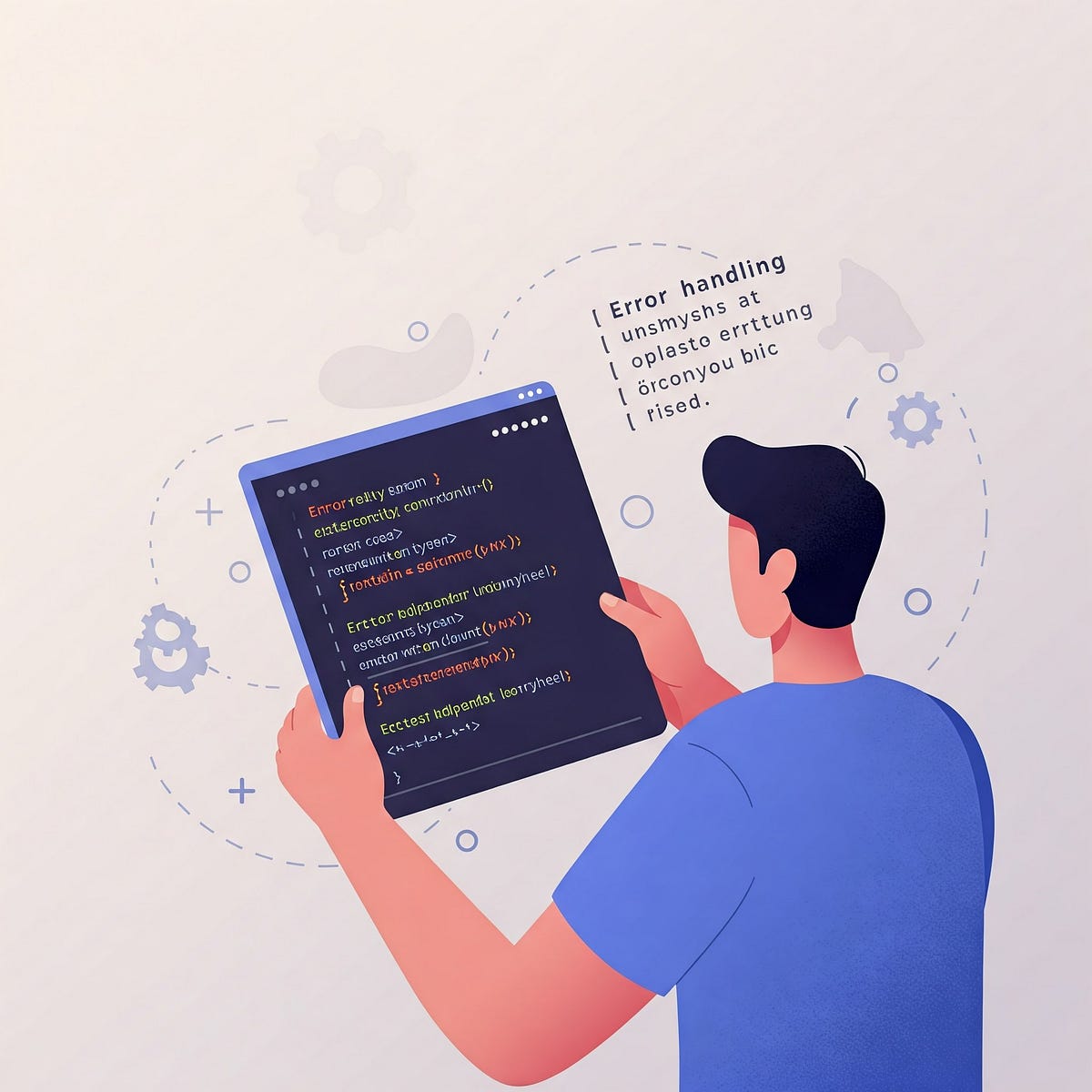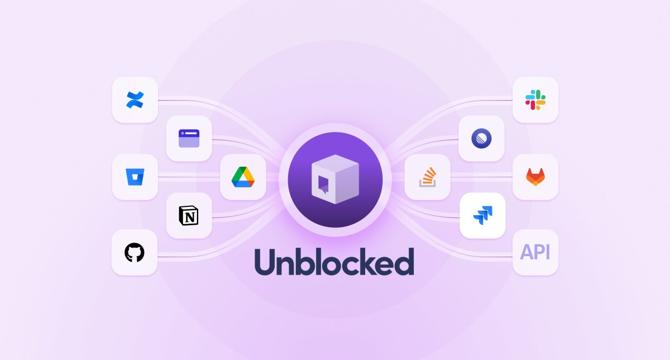Programming News
Medium
68

Image Credit: Medium
Why Your Unit Tests Are a Complete Waste of Time (And What to Do Instead)
- After experiencing a major production outage despite a thorough unit test suite, an engineer proclaimed unit testing as a waste of time.
- The article challenges the effectiveness of traditional unit testing approaches that rely heavily on mocks and test coverage metrics.
- It points out that unit testing often fails to detect critical issues at component boundaries and makes refactoring harder.
- The alternative proposed is to focus on behavior-focused testing, acceptance test-driven development, property-based testing, and contract testing.
- Behavior-focused testing ensures that tests verify what truly matters for the business, leading to more reliable code with less testing effort.
- Acceptance Test-Driven Development shifts the focus from unit tests to customer-valuable behaviors, improving communication between product and engineering teams.
- Property-based testing explores edge cases automatically, making the test suite more maintainable and effective in catching subtle bugs.
- Contract testing between components is recommended to focus on verifying interfaces rather than internal implementation details.
- The article addresses objections to moving away from unit testing and emphasizes the importance of testing what truly matters.
- It suggests a practical approach for transitioning from unit testing to more value-driven testing strategies in existing codebases.
- By shifting the testing focus toward behaviors and real business value, teams can build more confidence in their software with less maintenance effort.
Read Full Article
4 Likes
Dev
87

Image Credit: Dev
Documenting AWS Projects on Github..
- DevOps enthusiast has begun documenting an AWS project as part of their learning journey and invites community engagement.
- The project involves practicing core AWS services like EC2, S3, IAM, and CloudFormation, implementing security best practices, and using Infrastructure as Code (IaC) for automation.
- Detailed documentation includes commands used, configurations, and insights gained to benefit beginners in AWS and DevOps.
- The project can be viewed on GitHub at https://github.com/amandeol063. Collaboration opportunities and feedback are encouraged for further enhancements.
Read Full Article
5 Likes
Dev
128

Image Credit: Dev
What is Virtuoso Universal Server?
- Virtuoso Universal Server is a versatile software that combines features of a relational database management system, object-relational database, virtual database, RDF, XML, web application server, and file server.
- It functions as a single multithreaded server process with support for multiple protocols instead of relying on dedicated servers for each functionality realm.
- The free and open source version of Virtuoso Universal Server is known as OpenLink Virtuoso and is developed by OpenLink Software with chief software architects being Kingsley Uyi Idehen and Orri Erling.
- It provides a user interface called Virtuoso Conductor for database administration and operates on a cross-platform basis with a stable release of 7.2.14 as of November 11, 2024.
Read Full Article
7 Likes
TechBullion
421

Image Credit: TechBullion
5 Common Mistakes in Hiring Developers Remotely and How to Avoid Them
- Remote hiring has revolutionized tech recruitment by providing access to global talent while posing new challenges for companies.
- Costly missteps in the developer hiring process for remote teams can occur, such as overlooking cultural fit and skipping thorough vetting.
- Avoiding mistakes in hiring remote developers is crucial for project success and resource efficiency.
- Implementing a rigorous developer hiring process with coding challenges and technical tests can help in identifying skilled candidates for remote roles.
- Evaluating soft skills and cultural fit through video interviews and team-fit assessments is essential to ensure harmony in remote teams.
- Prioritizing candidates with aligned time zones or adopting asynchronous workflows can prevent delays and miscommunication in remote collaborations.
- Testing for remote-readiness with practical projects is vital to identify developers with self-discipline and adaptability for remote software jobs.
- Leveraging tech hiring platforms like Zeero accelerates the hiring process and ensures access to pre-vetted, high-quality developers for remote teams.
- Zeero's tailored developer hiring process for remote teams helped a startup launch a product ahead of schedule by hiring remote-ready developers with cultural fit.
- Following remote software developer hiring tips and utilizing cultural fit tools can lead to effective recruitment of remote developers and strong team building.
Read Full Article
25 Likes
Discover more
- Software News
- Web Design
- Devops News
- Open Source News
- Databases
- Cloud News
- Product Management News
- Operating Systems News
- Agile Methodology News
- Computer Engineering
- Startup News
- Cryptocurrency News
- Technology News
- Blockchain News
- Data Science News
- AR News
- Apple News
- Cyber Security News
- Leadership News
- Gaming News
- Automobiles News
PlanetPython
343

Image Credit: PlanetPython
Ari Lamstein: Course Review: Build an AI chatbot with Python
- Ari Lamstein took the course 'Build an AI chatbot with Python' by Kevin Markham to learn more about LLMs and found it to be a good starting point.
- The course is short, costing $9 and focuses on basics like creating an API key on OpenAI, installing necessary packages, and using LangChain and LangGraph to create a simple chatbot.
- The chatbot created in the course can learn and remember information about the users, as demonstrated by Ari's example where Chatbot #1 remembered his name in subsequent interactions.
- While the course is not intended for building complex bots, it serves as a brief introduction to the field and was appreciated by Ari for its simplicity and value.
Read Full Article
20 Likes
The Pragmatic Engineer
14

Image Credit: The Pragmatic Engineer
What’s Changed in 50 Years of Computing: Part 4
- In the book 'The Mythical Man-Month' by Frederick P. Brooks, published 50 years ago, predictions about software development are examined to see what still holds true today.
- The series of articles on the book covered various topics including programming, software architecture, developer productivity, and bug-catching tools of the past and present.
- Chapter 12 of the book focused on the challenges developers faced in the 1970s due to rapid technological changes, leading to low productivity.
- Tools for developer productivity were not portable back then, unlike now when programs are more standardized and cross-platform compatibility is prevalent.
- Sharing of developer tools has greatly improved with the rise of the internet and open source, allowing for easier collaboration and distribution within teams.
- The importance of platform teams for creating common tools and efficiency within engineering organizations is highlighted in the article.
- Interactive debuggers have evolved to speed up development, reflecting Brooks' belief in the role of better debuggers in enhancing productivity.
- Despite advancements in developer productivity tools, the topic remains complex and various frameworks are being developed to measure it more accurately at the team level.
- Bug-catching methods have advanced over the years, with more tools available today to identify and fix issues in software projects.
- Documentation, software shipping practices, and the need for good engineering leadership are highlighted as key factors in successful project delivery, a concept that remains relevant over the years.
Read Full Article
Like
Pymnts
100

Image Credit: Pymnts
The Long Game: How a 6-Year-Old Backdoor Compromised eCommerce
- Hundreds of eCommerce sites, including those owned by a $40 billion multinational company, were impacted by a supply chain attack involving a sophisticated backdoor embedded within Magento extensions.
- Attackers activated dormant malicious code after six years, compromising 500 to 1,000 websites with the ability to steal payment card information and other sensitive data.
- The incident underscores the shift to long con cyberattacks targeting supply chains, urging organizations to prioritize cybersecurity measures and ensure the integrity of the software supply chain.
- The evolving threat landscape calls for a zero-trust framework, automated code integrity checks, and enhanced scrutiny of software supply chains to mitigate vulnerabilities in the digital economy.
Read Full Article
6 Likes
Logrocket
188

Image Credit: Logrocket
How to work on great products in low UX maturity environments
- Working in a low UX maturity environment means the organization has limited understanding, appreciation, or integration of user experience design.
- Challenges in low UX maturity environments include undervaluation of UX, lack of user research, and design decisions often made by non-designers.
- To thrive in such environments, designers can become design evangelists, advocating for design value consistently.
- Starting with small wins, visualizing impact, speaking the language of business goals, building trust through consistency, and documenting work are key strategies.
- Measuring success signals like task completion rate, time on task, user-reported friction points, and user feedback quotes can demonstrate progress over time.
- Efforts in low UX maturity environments can lead to a more mature UX practice, laying the foundation for change and improvement.
Read Full Article
11 Likes
Medium
270

Image Credit: Medium
The Ultimate Error Handling Cheat Sheet Every Developer Needs!
- Good error handling is crucial in software development to improve reliability, enhance user experience, and simplify debugging.
- Key practices include using try-catch blocks for error prevention, catching specific exceptions, and providing clear, actionable error messages.
- For APIs, maintain a consistent error format with HTTP status codes and log detailed error information for developers while displaying user-friendly messages.
- Additional tips include validating input data, utilizing error-handling libraries, assigning unique error codes, and writing tests to ensure effective error handling.
Read Full Article
16 Likes
Dev
220

Image Credit: Dev
Optional Chaining in JavaScript: Write Safer, Cleaner Code
- Optional chaining (?.) in JavaScript allows you to safely access deeply nested object properties without throwing errors.
- Before optional chaining, accessing nested properties required verbose and error-prone checks for each level of the object.
- Optional chaining simplifies property access by returning undefined if any part of the chain is null or undefined, making code cleaner and safer.
- Best used when working with objects that may not have all expected properties, optional chaining in JavaScript enhances code readability and maintenance.
Read Full Article
13 Likes
Javacodegeeks
229

Image Credit: Javacodegeeks
Micronaut Logging Example
- Micronaut is a JVM-based framework for building microservices and serverless applications, offering flexible logging support by default.
- It uses SLF4J with Logback as the underlying logging implementation and emphasizes compile-time annotation processing.
- Key features of Micronaut include compile-time dependency injection, fast startup time, support for GraalVM, and reactive programming.
- Logging in Micronaut is configured using SLF4J with various logging frameworks, promoting flexibility in backend choice.
- Configuration is done via logback.xml for setting the logging level and defining specific loggers.
- Adding the logback-classic dependency in pom.xml ensures SLF4J binding to Logback is available for logging calls.
- A simple Micronaut controller example demonstrates logging at different levels like trace, debug, info, warn, and error.
- Micronaut simplifies logging integration with Logback, allowing customization of formats and detailed tracing across components.
- Developers can extend logging configurations for production by including file appenders, rolling logs, and observability tool integrations.
- Overall, Micronaut provides a streamlined approach to logging setup and management within its framework.
Read Full Article
13 Likes
Dev
13

Image Credit: Dev
Mastering Java Memory Management: A Comprehensive Guide to JVM Internals, Garbage Collection, and Optimization
- Java's memory management system is crucial for performance and reliability, abstracting low-level memory operations and offering automated memory allocation and garbage collection.
- The Java Memory Model (JMM) defines how threads interact through memory, with main memory shared among threads and each thread having its working memory.
- JMM issues like stale reads and race conditions are handled using synchronization primitives like synchronized blocks, volatile variables, and happens-before relationships.
- Understanding JMM is essential for writing correct and thread-safe Java programs, avoiding concurrency pitfalls, and improving code consistency.
- The structure of JVM memory includes Heap (Young & Old Generation), Stack, Program Counter Register, Method Area (Metaspace), and Native Method Stack.
- Understanding JVM memory segmentation enables efficient resource management and optimizations like generational garbage collection and class-loading strategies.
- The object lifecycle from creation to disposal follows a pattern of allocation in Eden space, survival in Survivor spaces, and promotion to the Old Generation based on reachability.
- Garbage collection in Java automates memory reclamation, with strategies like generational garbage collection dividing the heap and optimizing memory usage.
- Types of Java garbage collectors like Serial, Parallel, CMS, G1, ZGC, and Shenandoah cater to different workload requirements, from simple to real-time applications.
- Tuning JVM memory parameters (heap sizes, generation ratios, collector algorithms) is crucial for optimizing performance, throughput, and latency.
- Memory leaks in Java can occur despite garbage collection, often due to static fields, event listeners, thread-local variables, or leaking classloaders.
Read Full Article
Like
Medium
444

Image Credit: Medium
JetBrains opens its AI model for code generation to public
- JetBrains has made its AI model for code generation, Mellum, publicly available on the Hugging Face platform and open-sourced the code.
- Mellum is designed for code autocompletion, trained on ~4.2 trillion tokens across multiple programming languages with 4 billion parameters and an 8192-token context window.
- The training data for Mellum included code snippets from GitHub and articles from Wikipedia, and the training process took approximately 20 days on a cluster of 256 H200 Nvidia GPUs.
- JetBrains highlights that Mellum can be integrated into professional development tools, used for AI-based coding assistance, and in educational applications, with the model protected under the Apache 2.0 license for creating derivative products.
Read Full Article
26 Likes
Johndcook
339

5,000th post
- This blog celebrates its 5,000th post, which started in 2008 and has been maintained with an average of 5-6 posts per week over the last 17 years.
- Several popular posts over the last year include topics like memorizing the ASCII table, mathematical concepts, and discussions within the programming community.
- Posts that gained traction on platforms like Hacker News brought significant traffic, especially those focused on programming-related content.
- The blog contains useful resources like code snippets for software development and calculators for various mathematical calculations that have been well received.
Read Full Article
20 Likes
TechCrunch
348

Image Credit: TechCrunch
Unblocked raises $20M for AI to help devs understand codebases
- Dennis Pilarinos developed Unblocked, an AI-powered tool to assist developers in understanding codebases by answering contextual queries.
- Unblocked integrates with various development environments and applications to provide insights on a company's codebase and facilitate developer interactions.
- Beyond answering questions, Unblocked is working on tools like Autonomous CI triage to actively support developers with testing code in different scenarios.
- Unblocked secured $20 million in Series A funding from investors like B Capital and Radical Ventures to enhance its platform aimed at helping developers comprehend complex codebases amidst the rise of AI-generated code.
Read Full Article
20 Likes
For uninterrupted reading, download the app